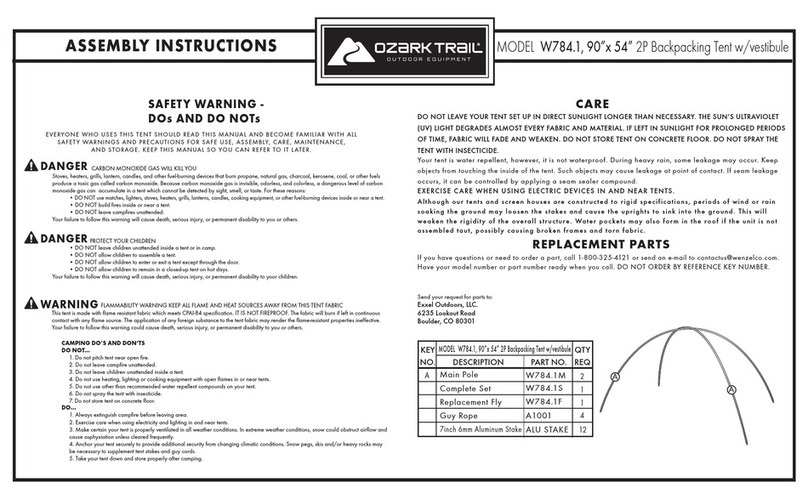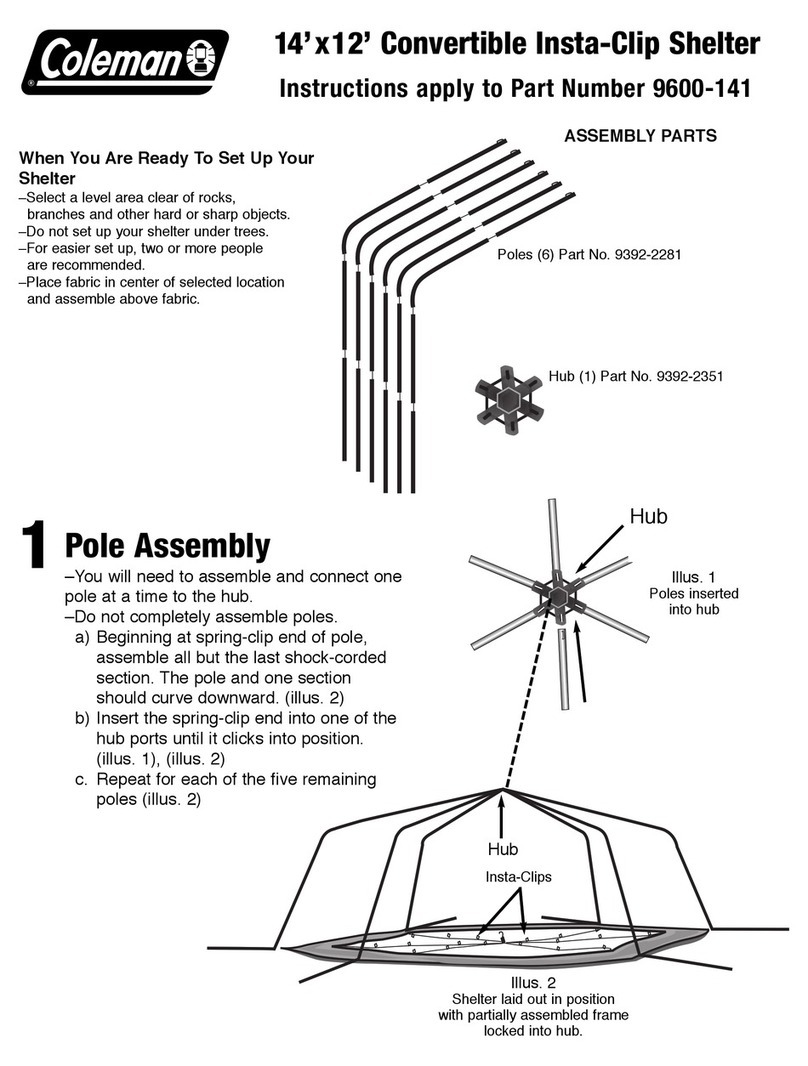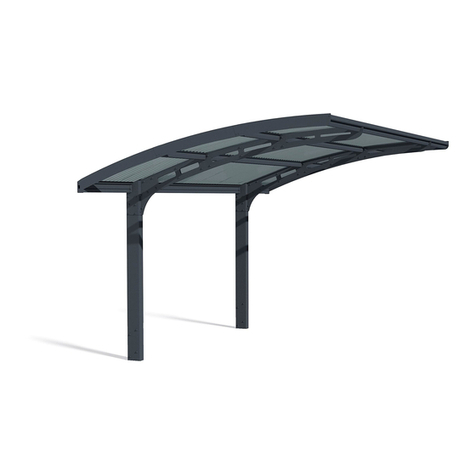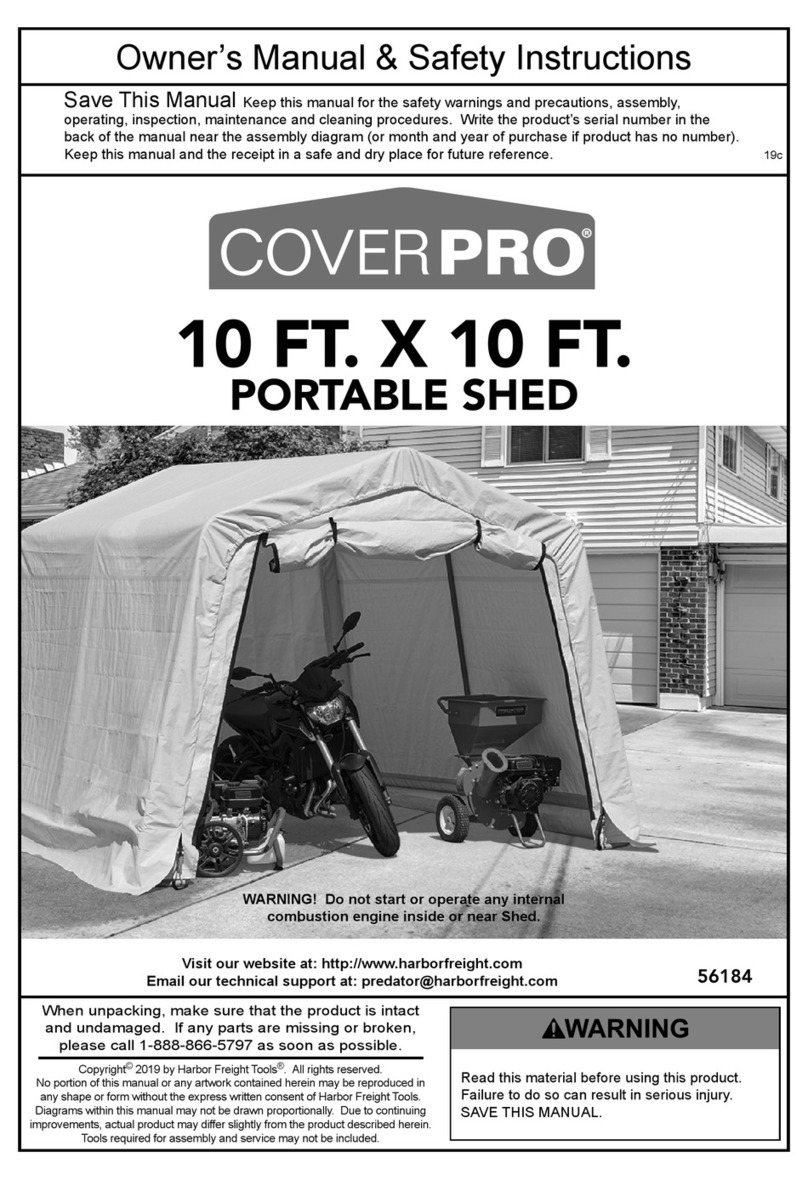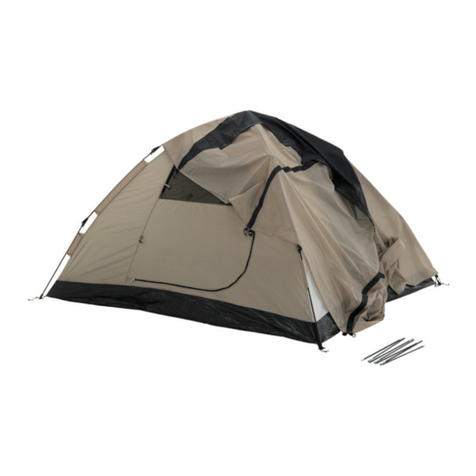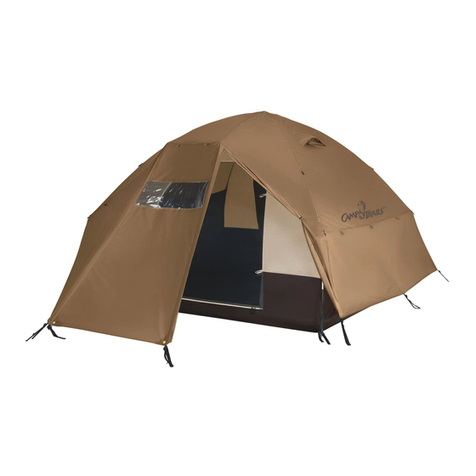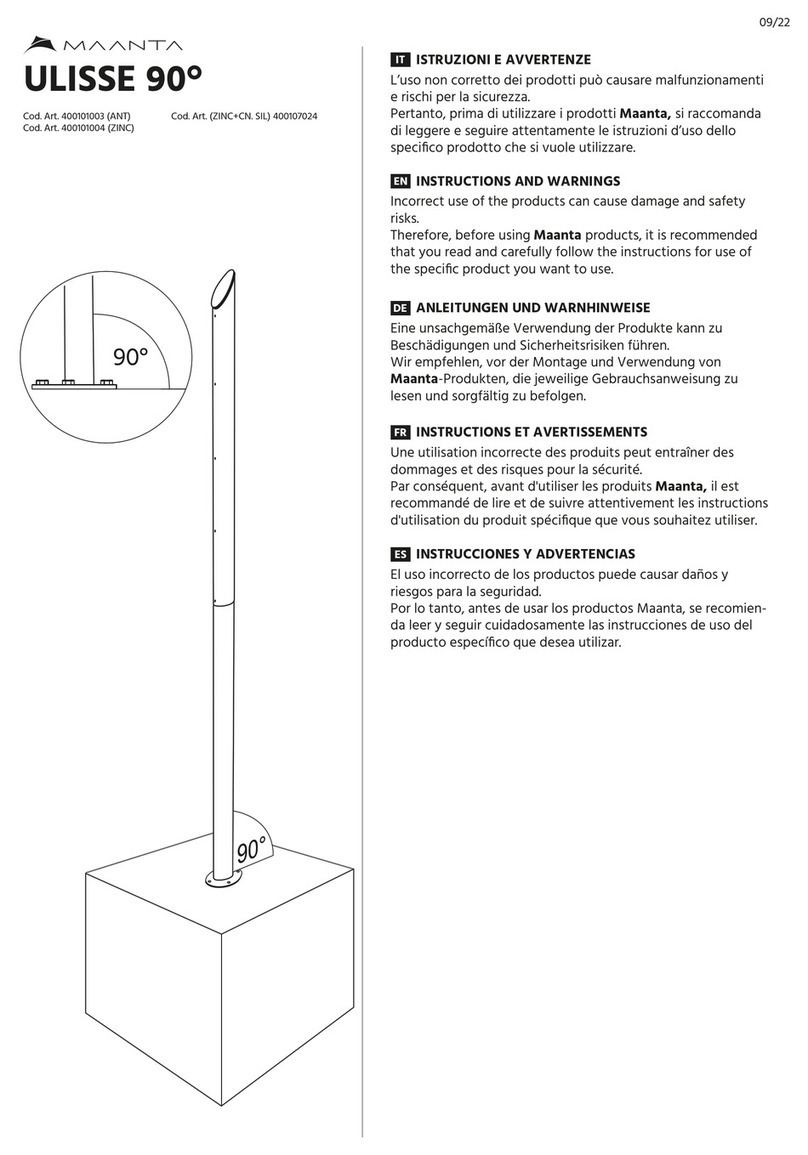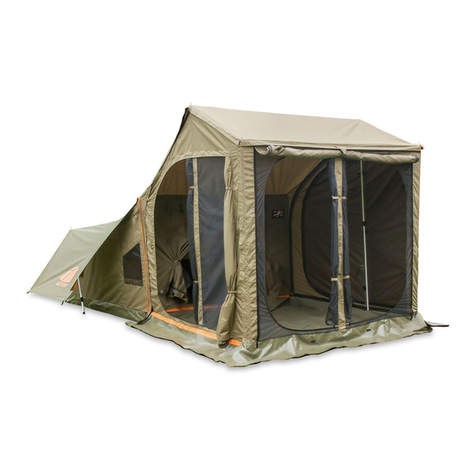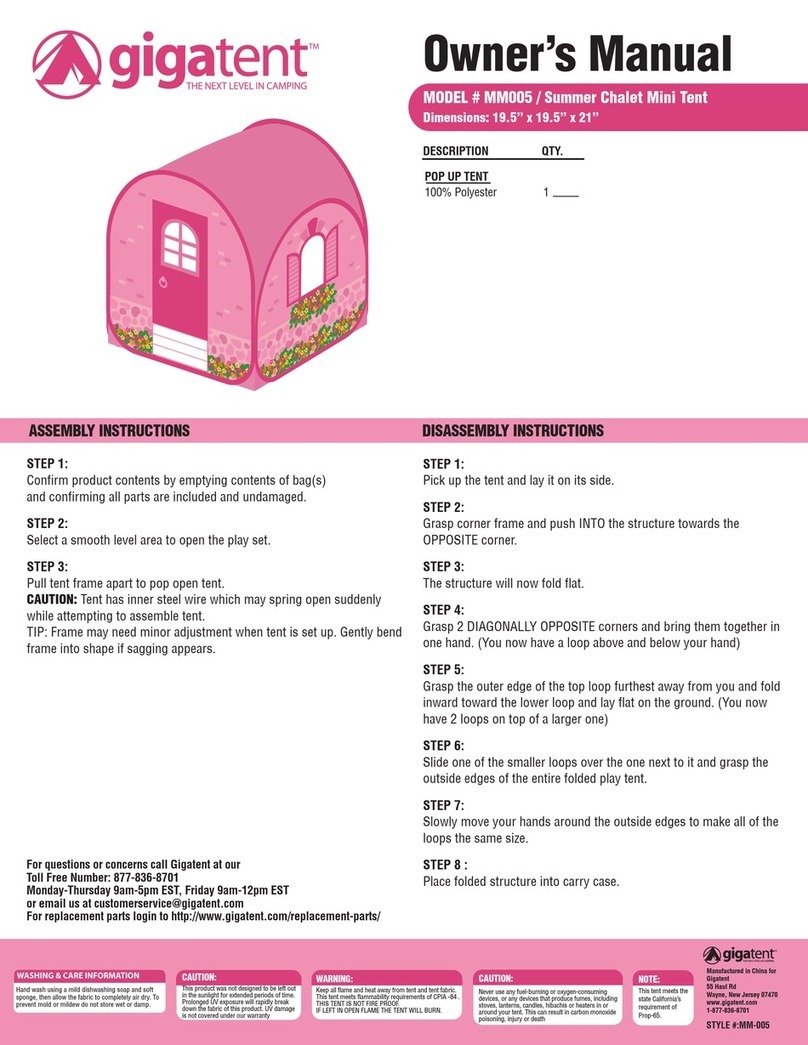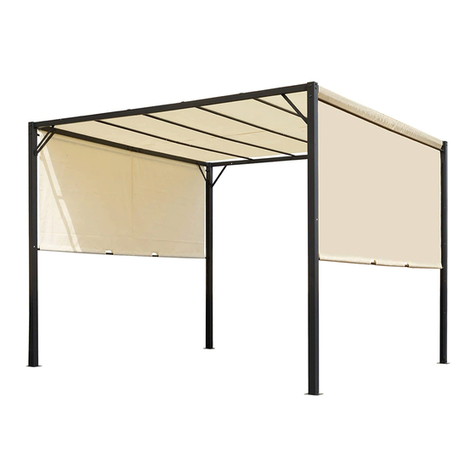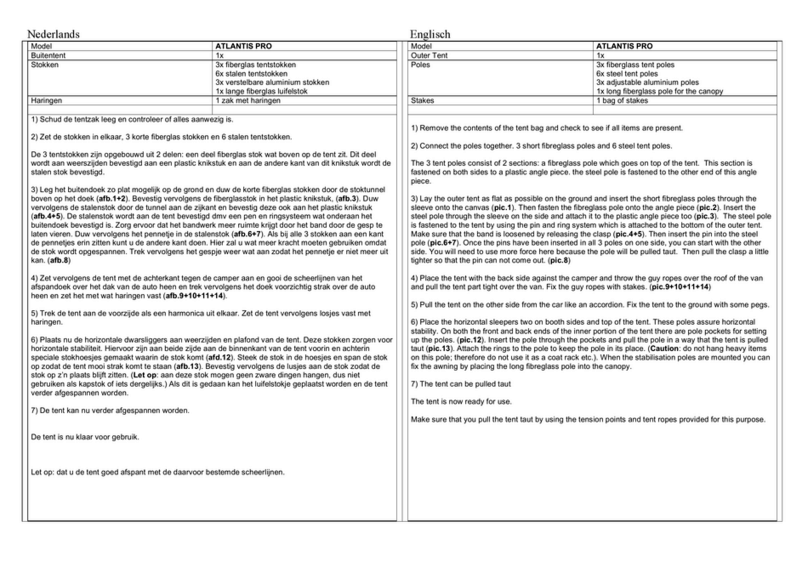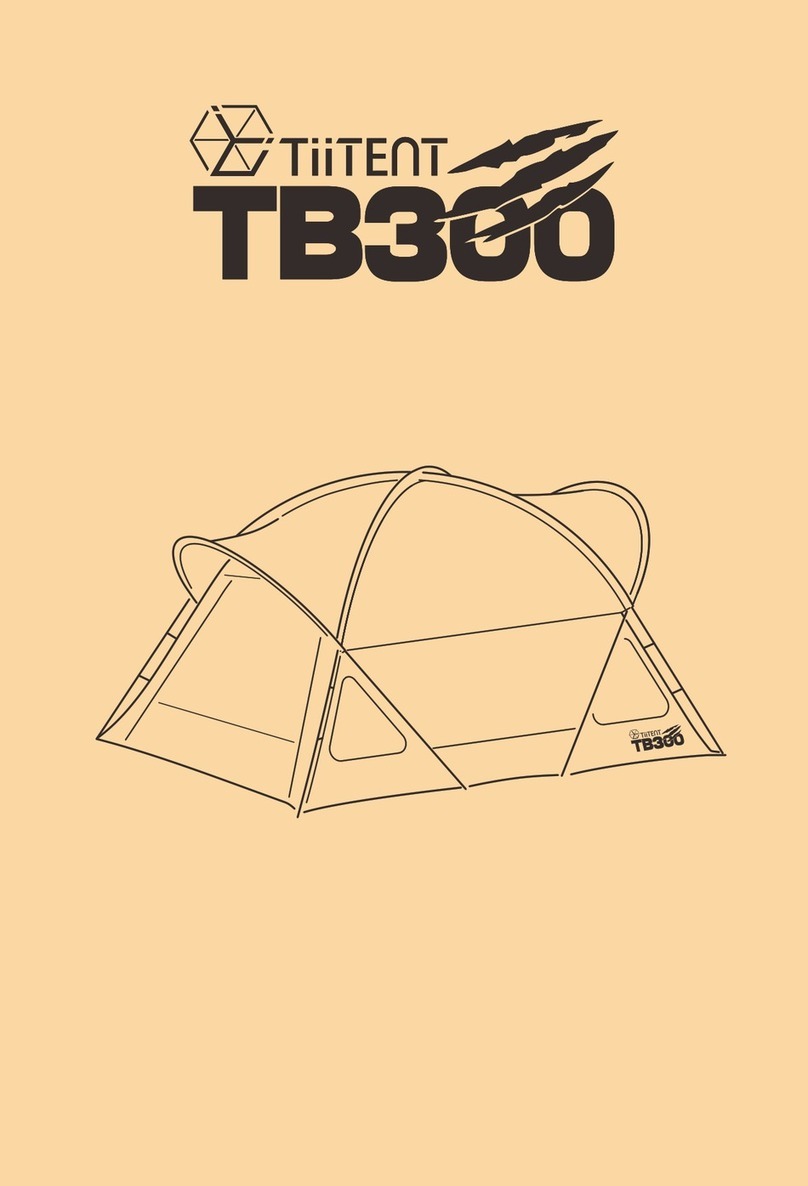
WARUNKI
BEZPIECZEŃSTWA
ZALECENIA
1. Namiot STARTENT nie jest przeznaczony do użytkowania podczas
ekstremalnych warunków pogodowych takich jak silny wiatr, silne
opady deszczu lub śniegu, burze, gradobicia itp.
2. Produkt nie jest przystosowany do eksploatacji w warunkach
obciążenia śniegiem. Używając namiot w okresie zimowym,
należy usuwać gromadzący się na nim śnieg, jeżeli grubość
pokrywy śnieżnej osiąga wartość 2 cm.
3. Rozstawiony namiot nie powinien być pozostawiony bez nadzoru.
4. Podczas silnego wiatru zaleca się bezwzględnie złożenie namiotu
(w pierwszej kolejności należy zdemontować ściany, następnie
zadaszenie).
5. Na specjalne zamówienie istnieje możliwość wykonania powłoki
namiotu z tkaniny trudnopalnej, spełniającej wymogi normy B1.
1. Przed przystąpieniem do rozłożenia namiotu należy dokładnie
zapoznać się z poniższą instrukcją montażu.
2. Podczas rozkładania i składania namiotu należy zachować
ostrożność, aby zapobiec obrażeniom ciała i innym szkodom.
3. Do montażu i demontażu namiotu potrzeba odpowiednio:
jednomasztowego – 2 osób, dwumasztowego – 3 osób,
trzymasztowego – 4 osób.
4. Przed złożeniem namiotu do toreb transportowych należy go
dokładnie wyczyścić. Ewentualne zabrudzenia należy usunąć
z tkaniny za pomocą zwilżonej w ciepłej wodzie szmatki. Nie
należy używać detergentów ani myjek wysokociśnieniowych.
5. Przed rozpoczęciem składania namiotu należy upewnić się, że jest
suchy. Jeśli jednak z przyczyn od użytkownika niezależnych
(np. pogody) namiot zostanie złożony wilgotny, należy najszybciej
jak to możliwe ponownie go rozłożyć w celu całkowitego
wysuszenia.
6. Przy występujących porywach wiatru należy systematycznie
sprawdzać osadzenie wszystkich kotew.
7. Do wyjmowania szpilek i kotew z twardego gruntu zaleca się
używania specjalnie do tego przeznaczonego przyrządu (nie
będącego standardowym wyposażeniem namiotu).
8. Jeżeli podmuchy wiatru przekraczają 50 km/h, należy opuścić
czaszę dachu [STARTENT stelażowy – opuszczenie masztu
namiotu (czynności odwrotne do montażu masztu),
STARTENT PASCAL - wypuszczanie powietrza z masztu].
UWAGA Powietrze zamknięte w STARTENT PASCAL zmienia swą objętość
wraz ze zmianami temperatury. Wysoka temperatura powoduje wzrost
objętości powietrza - produkt zwiększa swoją sztywność. Niska
temperatura powodujezmniejszenie objętości powietrza -
produkt traci sztywność.
INSTRUKCJA MONTAŻU NAMIOTÓW STARTENT
2
WARUNKI
GWARANCJI
Warunki gwarancji pobierzesz na stronie internetowej producenta.

